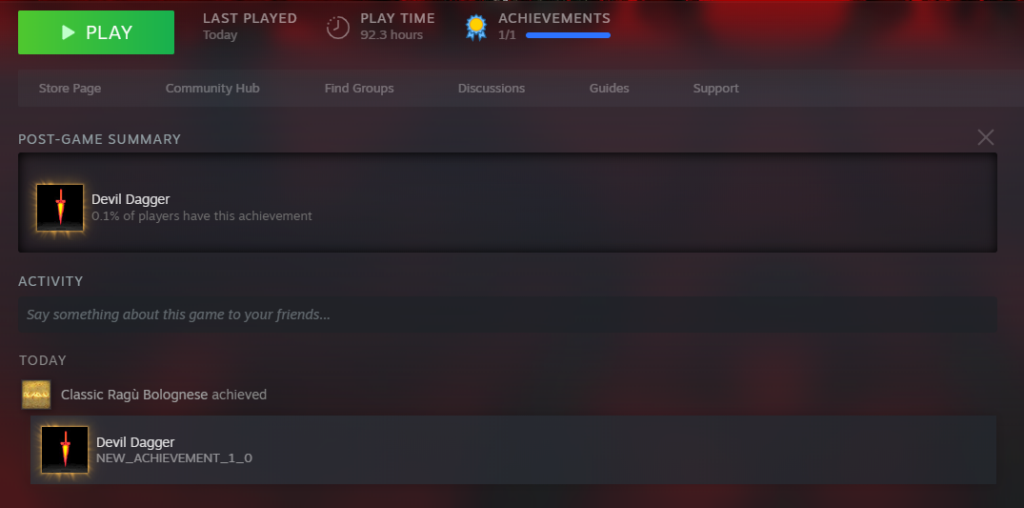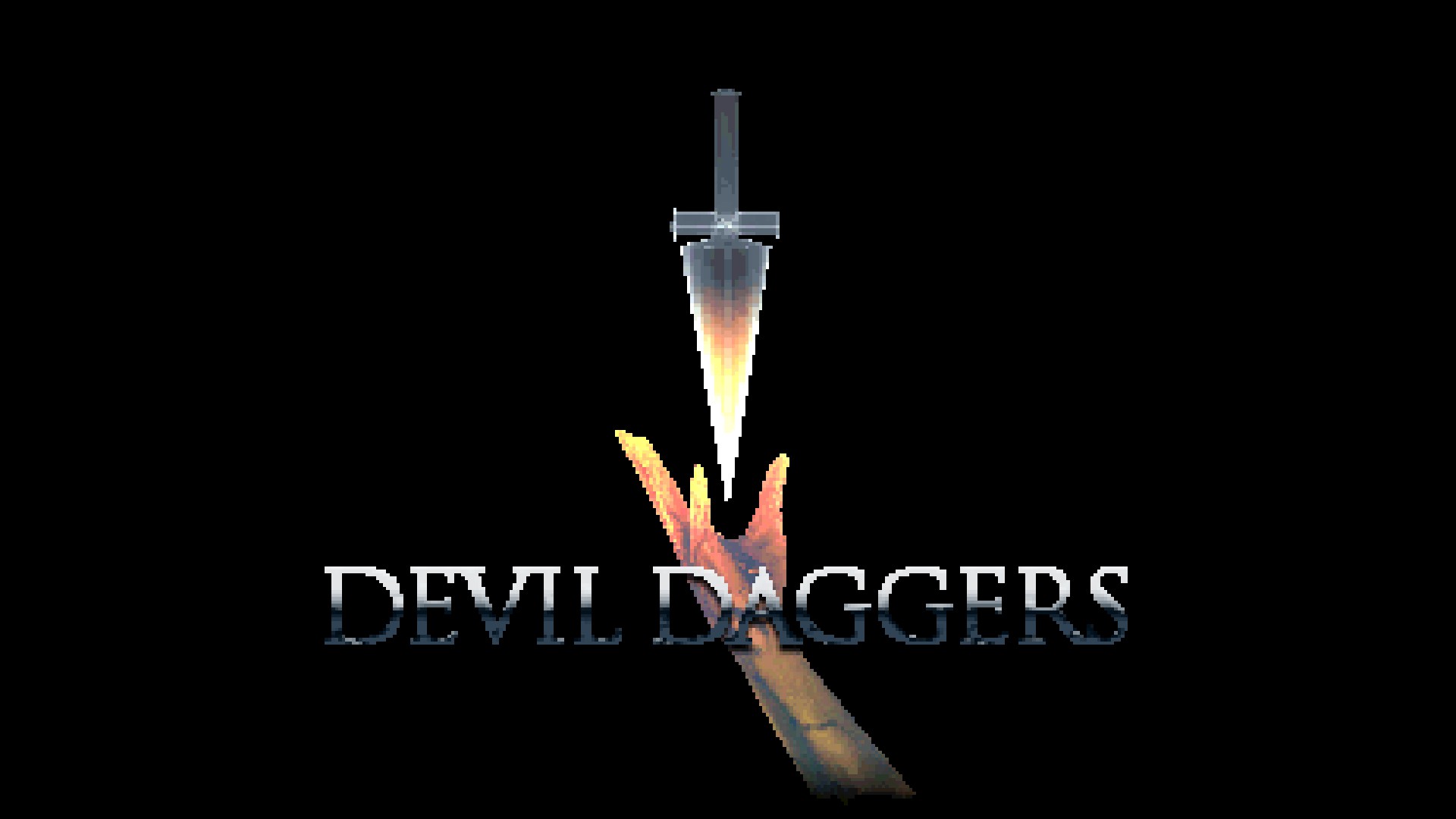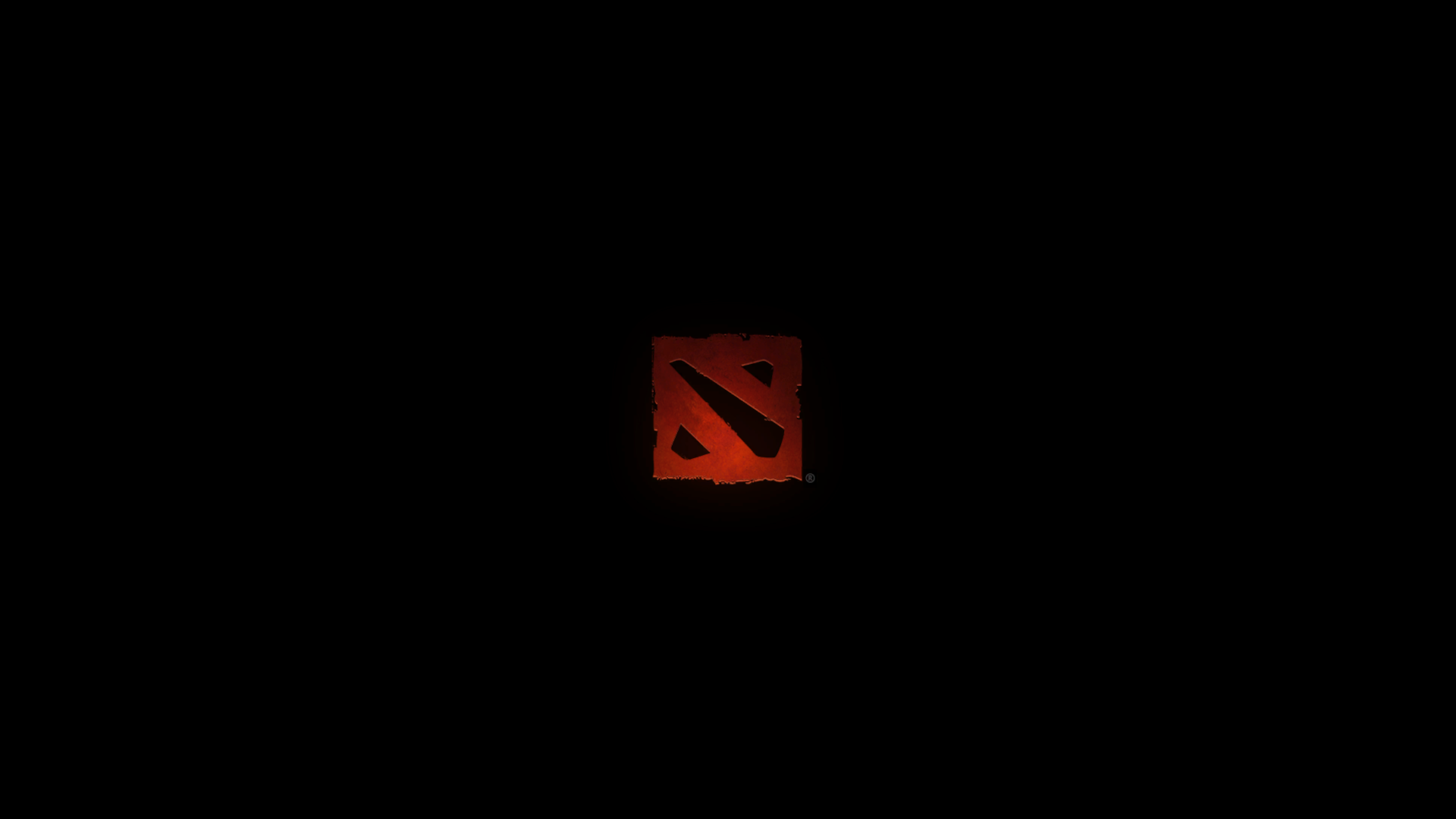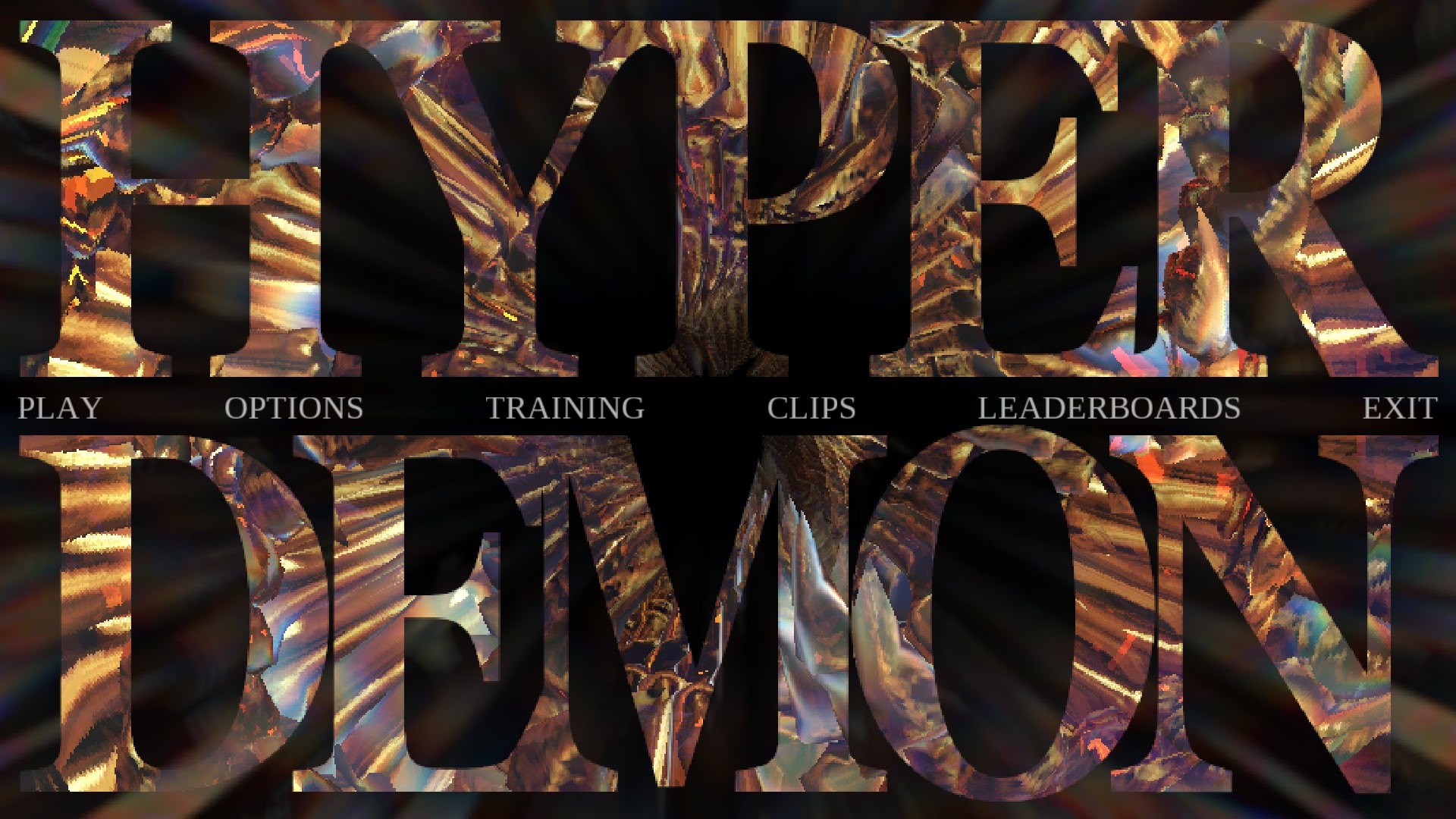This post a short reflection I wrote for another of my classes, however, it seemed fitting based on the theme of this blog – and this is probably one of my favorite games of all time.
A few years ago, a friend of mine sent me a link to an indie game that seemed interesting, Devil Daggers. The premise seemed simple, run around a circular arena shooting at different enemies that spawn and chase you around; with the rule being that if anything touches you, its game over and you need to try again. The game only had one achievement and central goal – survive for at least 500 seconds – which only 0.1% of all players had achieved (at the time – 0.3% currently). The mechanics involved tight, responsive, high speed controls and there was a fixed enemy spawnset – everything would spawn at the same time in each attempt (ie. one “squid” at 3 sec, spider at 39 sec, centipede at 114sec). Furthermore, the game revolved a leaderboard system where you could see every player’s highscore, position on the leaderboard and a recording of their best attempt. I’ll link a video below if you’re interested, in regards to high quality game design, the game is incredible.
Video Essay on Devil Dagger’s Game Design:
The first time I downloaded and tried the game, I was almost immediately disinterested due to the difficulty and nonexistent instructions. The game felt like an overwhelming, chaotic mess. Despite having such a simple premise, the game seemed nearly impossible; and after spending roughly an hour and a half trying to see how far I could make it, I couldn’t make it past 25 seconds or so. The idea of reaching 500 seconds seemed absurd – impossible even – and I quickly understood why out of the approximately 140,000 players at the time, so few had managed to make it to the goal post. My friend didn’t perform any better and we both uninstalled the game.
Half a year later, that same friend and I were chatting and he brought up Devil Daggers once more, telling me he decided to try the game again. However, to much surprise he began praising the game – detailing how deep the mechanics truly go and that he’s managed to break the 100 sec mark. At this point he had offered to “coach” me a little and break down how to succeed. He began by explaining some entry level mechanics such as enemy prioritization, specific enemy movements, ideal player movement patterns, etc; and within an hour I started consistently making it past a minute. He explained the fixed spawnset and that you could memorize the spawn pattern; and now, rather then feeling like the game was a mess I started to see it as a “dance” of sorts. Every run you try to repeat the same movements, perfecting your timing and positioning. With every attempt I started learning when different things spawn and which enemies take priority – even learning that some you can outrun, while others can outrun you. I was hooked.
While there are random elements, the game was primarily a competition against yourself; testing not only your mechanical skill, but also your composure and quick decision making skills. I started dumping countless hours into the game, and each failure felt like a learning opportunity – thinking to myself what mistakes I made that led to my demise. I believe at this point I began approaching the game with a growth mindset. That 500 second goal, while still incredibly difficult, felt achievable and I was determined to be one of the few to get there.
For the next few months, I’d boot up the game every evening and do a few runs – I noticed my muscle memory getting better each day, and my position on the leaderboard was on a parallel trajectory. More and more of my friends download the game and gave it their all to see how far up the leaderboards they could make it – the competition within the group kept us engaged and we would learn new strategies from one another. Every time we would hit a wall, we’d watch the replays of other players on the leaderboard and try to figure out what they were doing better than us, or what strategies they utilized. After watching the best runs of some of the top players, we realized the game went even deeper, with emergent mechanics and ways to abuse the systems in place for an advantage; as an example, we noticed the top players were shooting their projectiles at a faster rate of fire than us, however, we didn’t understand how that was possible. To take it further, we realized some of the top players had YouTube channels where they would post tutorials – we sought out the channels of the best players and studied their guides relentlessly.
One of the key lessons we studied was that same mechanic that allowed you to shoot faster, learning it was referred to as “shotgun tech” or shotgun technique. The videos detailed that due to the way the shooting mechanics were programmed, if you clicked in a certain pattern, with the most PRECISE timing, you could get the player to shoot at almost double the standard rate of fire. The videos broke this down in extreme detail and suggested players who are attempting to learn this should play the game with a metronome, timing your clicks to the beat. The guides further suggest starting the metronome off at 130bpm and slowly increasing it to 160bpm once you get more comfortable with the timing of the click pattern.
2 minute video detailing the mechanic:
After spending countless hours learning this key mechanic, we were able to consistently make it past the 270 second mark. We were better than about 130,000 of the players who’ve ever tried the game and our gameplay became mesmerizing to watch. I thought it would be a fun idea to begin streaming myself on Twitch whenever I’d play the game; I wasn’t expecting a large viewership as the game was still relatively niche (and I’m not a regular streamer). To my surprise I’d average 3-8 people who’d pop in and watch me play – however, some of these viewers ended up being the top players who have reached the 500 second mark. They’d watch my runs and critique my gameplay, pointing out where I could improve and what mistakes I was making. While there were plateaus, I was consistently improving my score and position on the leaderboard over weeks/months.
After months of persistence and consistent effort, my highscore was somewhere between the 400 and 500 second mark – putting me in the top 1000 players. I’d regularly stream my gameplay to friends over Discord and at this point, they were just as invested as I was in this journey. Even they believed I could be one of the few to reach that once seemingly impossible goal. I broke the top 1000 players mark on August 8, 2020.
Come October 15th, 2020, – 92.3 hours of total game time, – while streaming my gameplay on twitch to a few random viewers and a group of my friends I managed to get a run where everything felt right; I was in the zone – pure flow state. My heart was racing as I tried to keep my composure. The timer was counting up and at the 480 second mark my friends started recording my screen/webcam; finally, after countless months, that was the run. I broke the 500 second mark and died at 503.7 seconds. They have a video of me as I sat there, staring at my screen in disbelief with a delayed celebration as I started screaming of happiness and pacing around my room in shock.
Despite being just some random indie game, this achievement made me ecstatic. All the countless hours, months of repetition and determination, I was finally one of the 0.1% of individuals to do the impossible.

Over the course of a year, I went from thinking this was another low effort small project with an unattainable arbitrary goal, to truly believing in myself. Reflecting back on this journey, I see how I unknowingly adopted a growth mindset. Despite getting frustrated and initially giving up on Devil Daggers, I persevered and welcomed any learning opportunity with open arms. I learned from the best, watching countless replays and tutorial videos – always reminding myself “if they could do it, so can I”. I employed external aids such a spending ~15 hours with a metronome clicking in my ear, and tried countless strategies to figure the steps to my own variation of this complicated dance. I internalized the advice of the top players who’d tune into my streams. Ultimately, I learned that the only person holding me back from reaching the goal was myself – and once I began truly believing in myself, I reached that goal.
As silly as it may sound; despite being just some indie game, the journey I went through taught me a valuable lesson on how to learn a skillset and improve through persistence and practice.



